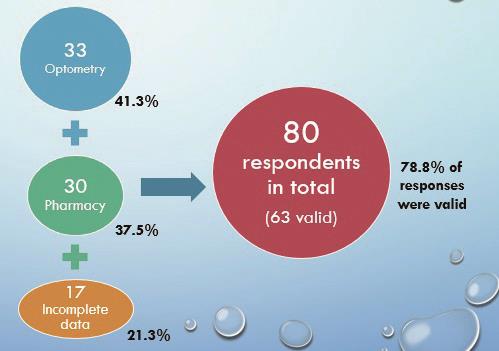and finds it both accurate and easy to use
The move towards combination units has been ongoing for some years now. Desktop units providing a number of functions, such as non-contact tonometry, autorefraction and keratometry, are familiar in many pre-screening areas. Clear benefits include the freeing up of space in a busy practice along with improving the efficiency of the pre-screening process. If a unit can undertake several different measurements without the need for patients having to be moved from machine to machine, this not only speeds up the whole process but obviously will make the experience less onerous for the patient. The new Tonoref III (UK distributor Birmingham Optical) is a useful step up from the well-established Tonoref II unit familiar to many, with an expanded range of functions that should prove attractive to the practitioner.
Tonoref III in Practice
I recently used the unit in a private practice on a busy afternoon (Figure 1). The new unit boasts a number of useful clinical functions. As well as autorefraction and keratometry (as provided by its predecessor), the new unit also undertakes non-contact tonometry and pachymetry. The pachymetric measurement is then able to be used to modify the NCT reading to better reflect the influence of corneal thickness upon the intraocular pressure (IOP) measurement, a significant source of error in IOP measurements for those with thin or thick corneas.

I was keen to check a number of things. Firstly, how quickly does the machine gather the full gamut of measurements and is this easily done by, say, a suitably trained auxiliary staff member? The key to this is the pre-programming of the instrument. Using the touchscreen control pad (Figure 2) it is possible to set the machine to automated or manual, and to opt for the full range of measurements or individual ones as required.
I programmed the unit to take the full range of measurements and the auto setting allowed the autorefraction and keratometry to be completed with one simple button press once the unit was focused on alignment on the screen. To then move to tonometry and pachymetry, you are directed to move the joystick back at which point the unit descends by an amount sufficient to line up the tonometer jet. The whole process for each eye (after a little practice) was just a couple of minutes though I did take a few extra repeat readings to check for repeatability than I might have done in a standard clinical procedure. The printout for one eye is shown in Figure 3 and its length reflects the extra tests I undertook.

Notice how the IOP is represented firstly as a standard IOP in mmHg and also as a corrected IOP value. The original Goldmann was calibrated according to a 520 micron corneal thickness and it is now well known that corneas vary significantly from this value. Any significantly thicker corneas would be expected to offer greater resistance to the incoming jet of air so resulting in artificially elevated IOP values. The pachymetric evaluation would be used to offer a lower corrected value and having this incorporated so easily into a pre-screening unit is a big advantage if one hopes to reduce false positive referrals based on IOP value.
Repeatability
The second consideration was regarding the accuracy of the instrument. I decided to also take measurements of each patient using Goldmann applanation tonometry and also using the Nidek Duo OCT unit in the same room. The results were exceptional in that all data tallied well. For pachymetry I used the anterior OCT measurement and the two tallied exceptionally well (the biro measurement in Figure 3 is my rather haphazard recording for this patient – you will agree the values are amazingly similar). I had a similar correspondence for GAT with values always tallying within +/- 1mmHg of the non-contact value gained by the Tonoref III. The sample was only on 12 eyes and all IOPs were within the standard range so there is a limit to what can be extrapolated from this small-scale trial. However, I can confirm that the Tonoref III is easy to use, rapidly acquires data, usefully incorporates a corneal adaptation for tonometry readings, and is certainly worth looking at for anyone thinking of upgrading their pre-screening instruments.
Further information from www.birminghamoptical.co.uk
